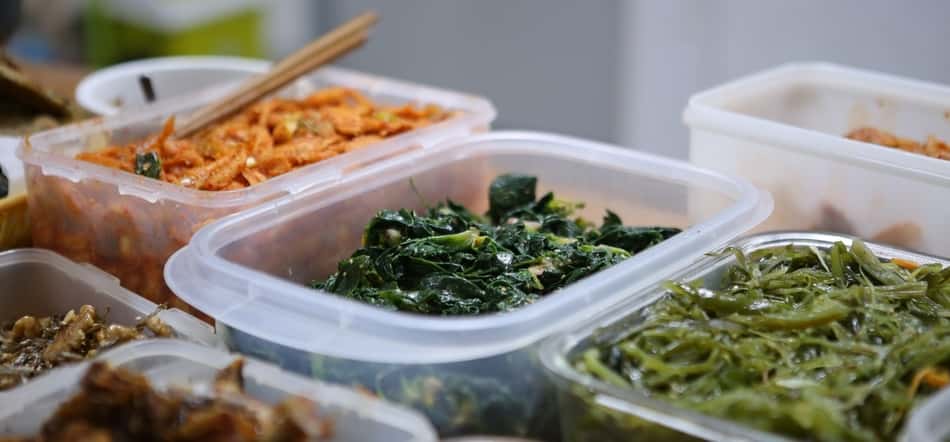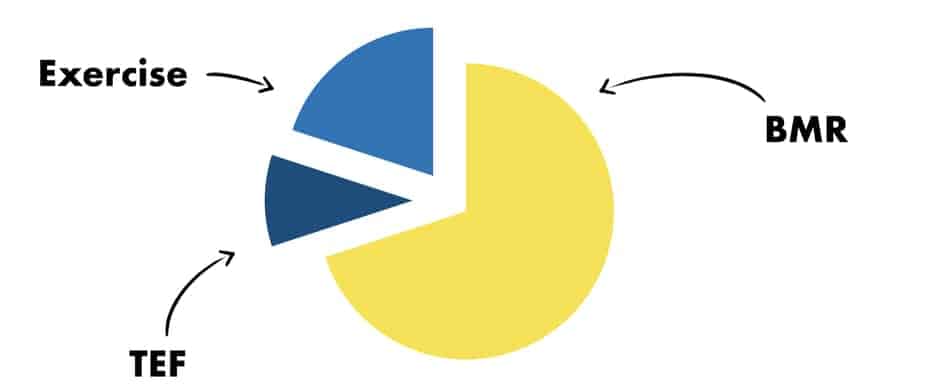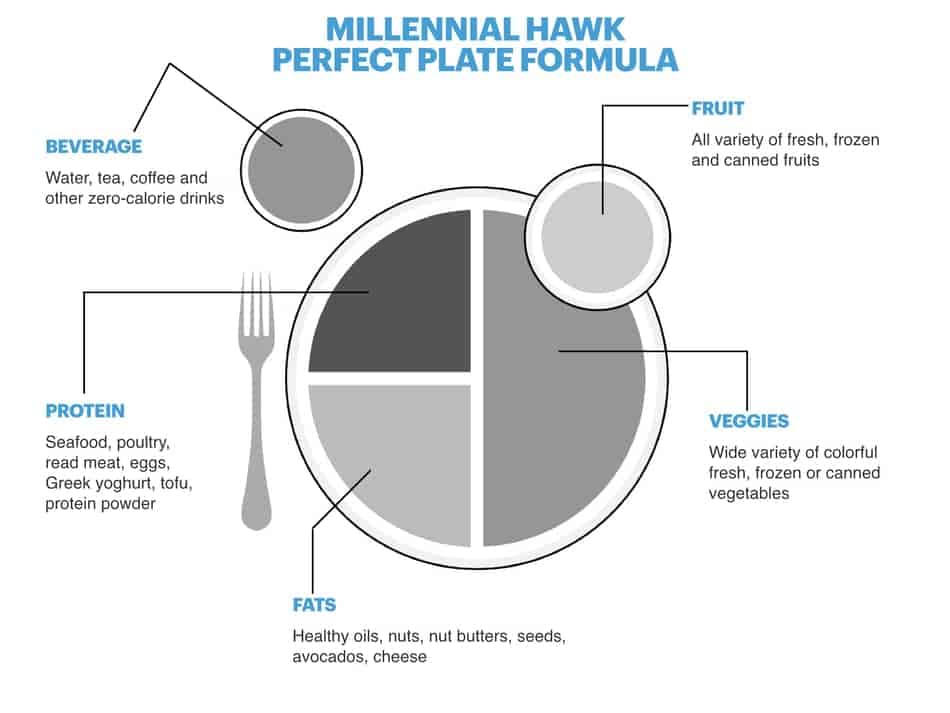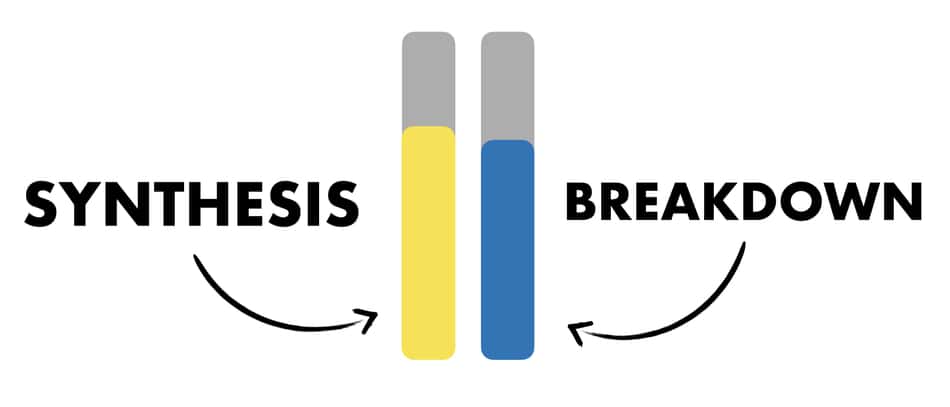
Knowing the quantity of the food while doing OMAD will help you get the right amount of calories and ensure you’re getting the best results. In this article I will explain how much should you eat on OMAD.
In general, when doing OMAD you should eat around below your maintenance level of calories. This will create a negative energy balance and switch the body from using glucose as the main energy into stored body fat. Over time, you will start to lose weight.
But there is so much more to understand to this question. Because not all of the calories are created equal.
How Many Calories Should I Eat On OMAD?
As a general rule, you should be eating between 1200 – 1800 calories on OMAD, depending on your basal metabolic rate. Eating around your basal metabolic rate will ensure your body is in the calorie deficit and can burns fat.
Can you eat as much as you want on OMAD? On occasion, you can eat as much as you want on OMAD, as long as you eat in your 60-minute eating window. However, to stay consistent and to get the best results, you want to limit your food and stay under your basal metabolic rate.
So it all depends on your personal goals and the reason why you’re doing OMAD. Some people do OMAD because it gives them the freedom to eat as much as they want. Others do it to lose a significant amount of weight.
What is basal metabolic rate? Basal metabolic rate is the number of calories that are needed to supply energy for basic functions like breathing, circulation, protein synthesis, and enzyme production. Every person has a unique metabolic rate that is depending on the body weight, age, gender, and lean body mass.

Other components of your metabolism include physical activity and TEF (thermogenic effect of food). Basal metabolic rate (BMR) accounts for around 70% of your total energy expenditure (calories burned).
But you don’t have to count calories to stay in that zone, as long as you have just one meal a day. Here I wanna show you a simple way to measure your calorie intake, without counting calories.

In the picture above you can see a typical breakdown of a dinner plate. The most important elements of your meals are proteins, carbs and fats.
Proteins
Having a high amount of proteins while doing OMAD is important not only from the satiety perspective but also from the metabolism point of view. High protein intake help with keeping the lean body mass which is responsible for 60-70% of energy expenditure.
Hopefully, you won’t make my mistake and just choose blindly whatever foods come to your hand. When I was experimenting with OMAD for the first time, I completely disregarded the fact that our body needs a certain amount of protein daily.
In the end, I’ve lost plenty of weight, but I also lost plenty of lean body mass (muscle). And with lower muscle mass, my metabolism plummeted.
Here’s what you need to know about proteins. Our body uses proteins daily, regardless if you’re getting them from the diet or not.
| Protein synthesis | When enough protein is supplied from the diet, the body accumulates them and triggers the building process |
| Protein breakdown | When there is not enough protein from the diet, the body starts to breakdown lean body mass to get the supplies and triggers the catabolic process |
When protein synthesis exceeds breakdown, you have enough proteins to build muscle, manufacture enzymes, manufacture hormones, etc. But when breakdown exceeds synthesis, your body will harvest proteins from muscle. Here’s how it looks on the graph.

Here’s the kicker.
When you’re on OMAD, your body is in a calorie deficit. Calorie deficit accelerates protein breakdown and if you don’t deliver optimum protein, you will lose muscle mass and plummet your metabolic rate.
Did you know that 80% of the people who lost weight gain it back within the next 5 years? (source) One of the reasons is because once we lose weight, it lowers our metabolic rate below the baseline.
This means if you are 200 lbs now, and you lost 50 lbs, you will have a 15-40% lower metabolism than a person who always been on the 150 lbs weight all the time.
That’s what happened to me and many other people. And the easy solution is to simply have a high protein meal and do regular resistance and strength training.
What Proteins To Eat On OMAD?
The best protein sources for OMAD include lean cut meats, fish, whole eggs, dairy, beans, legumes, and protein powder. Having enough protein will increase your energy expenditure, preserve your lean body mass and keep you full for longer.
Here are some of the most protein-dense and satieing foods you can choose for OMAD and calories equivalent.
| Food | Servings size | Protein per serving | Kcal |
|---|---|---|---|
| Chicken breast | 3 oz. | 25 g | 187 |
| Cottage cheese | 4 oz. | 14 g | 111 |
| Deli turkey | 5 oz. | 19 g | 159 |
| Egg | 1 medium | 7 g | 78 |
| Greek yogurt | 6 oz. | 17 g | 100 |
| Hamburger | 3 oz. | 22 g | 282 |
| Lamb | 3 oz. | 23.5 g | 250 |
| Milk | 8 fl. oz. | 8 g | 95 |
| Pork | 3 oz | 22.5 g | 206 |
| Salmon | 3 oz. | 17 g | 177 |
| Beef | 3oz. | 26 g | 213 |
| Tuna | 3 oz. | 21.5 g | 112 |
When you’re in a calorie deficit and you want to keep optimum protein synthesis you should be consuming around:
- 100 grams of protein for women
- 150 grams of protein for men
So if you choose protein rich foods to meet your protein needs, you will end up with 800 – 1200 calories just from that foods.
This will allow you to stay on track, keep your meal body mass high, maintain your metabolic rate, and control your satiety (source).
Also eating proteins will ensure you don’t really need to count calories on OMAD.
Fruit and Veggies
Compared with simple carbohydrates, fiber has a low energy density and may have a positive effect on appetite. Eating fiber-rich foods while doing the OMAD diet can help you increase satiety, lower hunger, increase GI motility and reduce total food intake.
What are fiber-rich foods? Fiber-rich foods contain a high amount of nondigestible oligosaccharides and nonstarch polysaccharides. It can be divided (depending on the structure, concentration, and composition) into soluble and insoluble.
For satiety, the most important are soluble fibers because they seem to slow digestion, extend nutrient absorption, and delays gastric emptying, which all leads to feeling full (source).
Here are the examples of food rich in soluble fibers:
| Soluble fiber | Foods |
|---|---|
| Glucans | oats, barley, whole grains, seaweed |
| Pectins | pears, apples, plums, gooseberries, oranges, carrots, grapefruits |
| Fructo-oligosaccharide | onion, chicory, garlic, asparagus, banana, artichoke, leeks |
| Galactooligosaccharides | red kidney beans, chickpeas, baked beans, cashews, pistachios |
| Non-digestible oligosaccharides | blueberry, pear, watermelon, nectarine, garlic, spring garlic, leek, white onion, |
In general, any vegetables and fruits that are colorful are rich is some type of soluble fiber.
TIP: Potatoes have the highest satiety score of all the foods available.
But that doesn’t mean you should only eat chicken and potatoes. You also need to add nutritious foods too.
What About Carbs?
One of the common question is about carbs, and especially can I eat carbs on OMAD?
You can eat carbs on OMAD. Eating carbohydrates while doing intermittent fasting helps with energy and helps with recovery, especially if you’re doing any form of physical activity.
I look at it like this. If you like carbs, then eat them. It won’t affect your results. Especially if you’re doing one meal a day. Because you’re in the caloric deficit anyway.
Go Further with OMAD
This article is part of the OMAD: What To Eat
In the following articles, I show you all the related aspects necessary to get started with OMAD and knowing what to eat for the best results.
Learn More: Click here to learn more can I eat anything on omad
